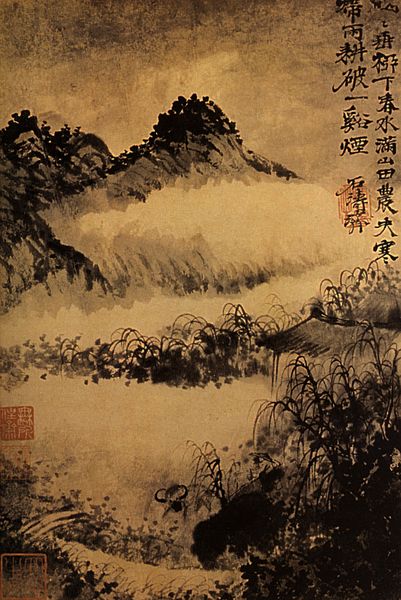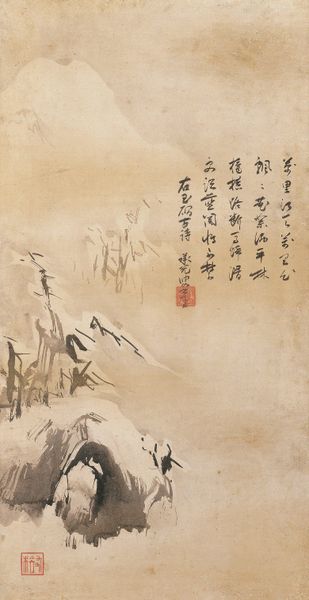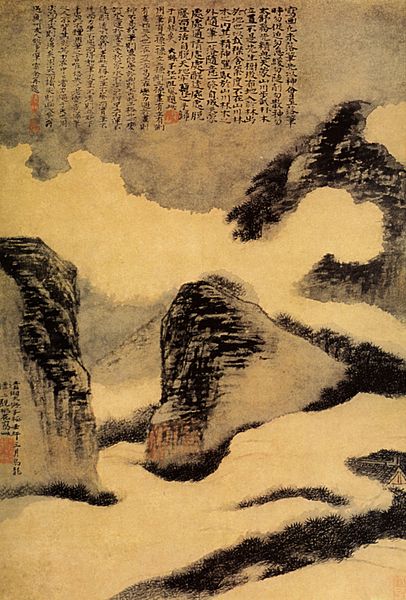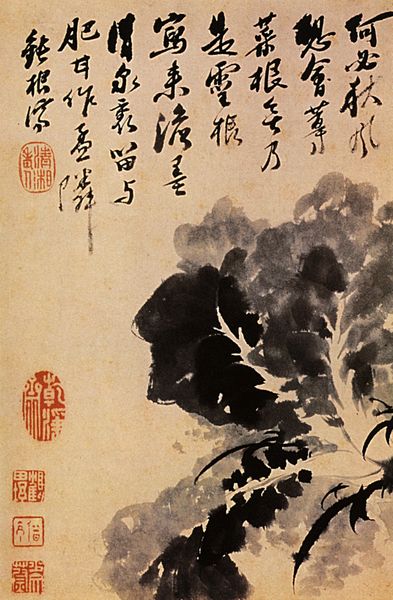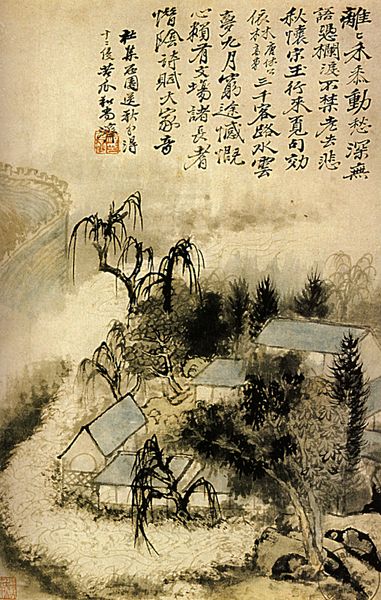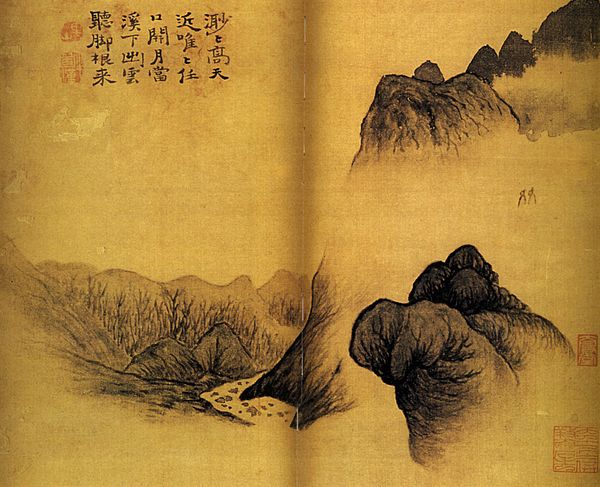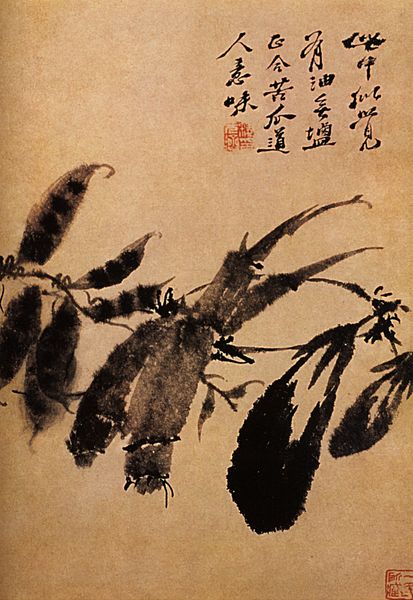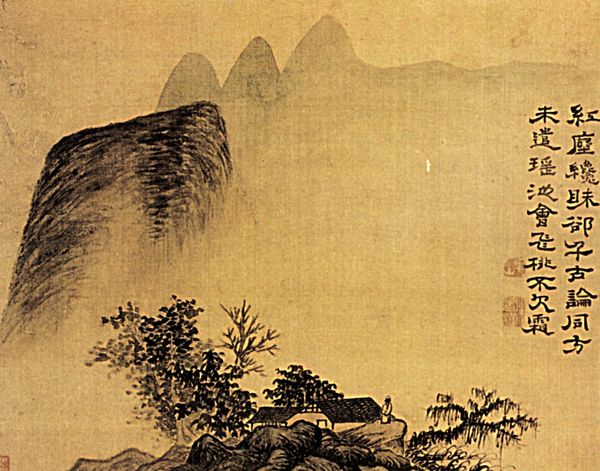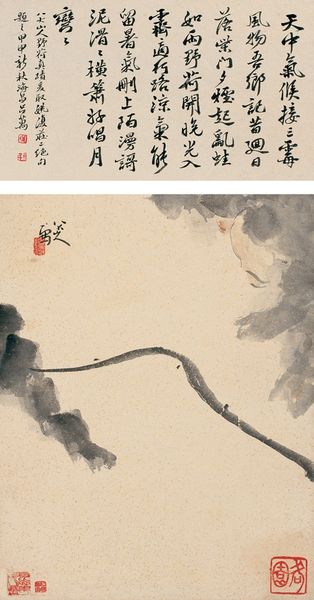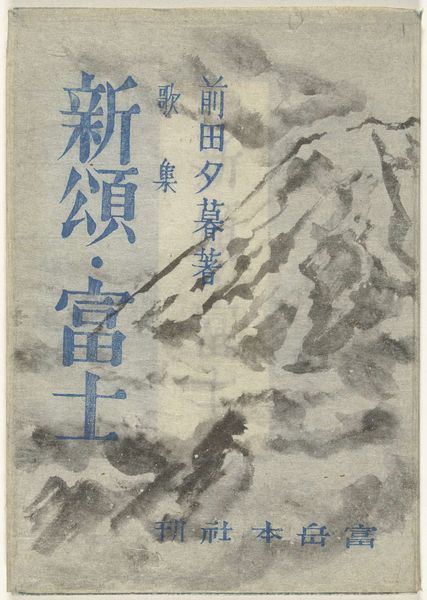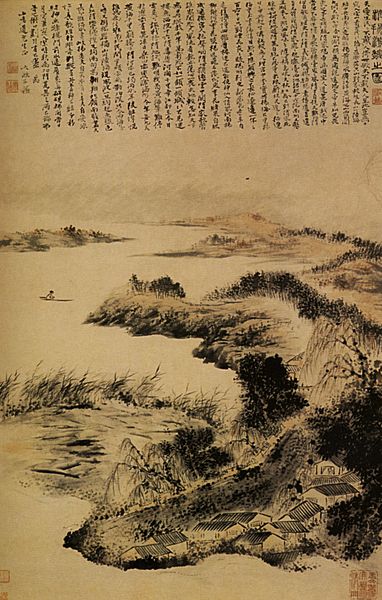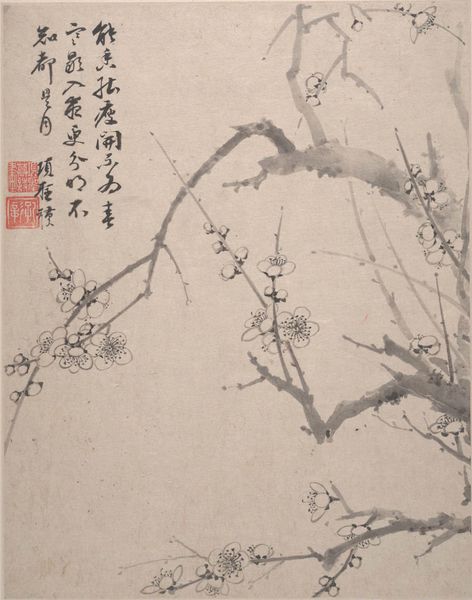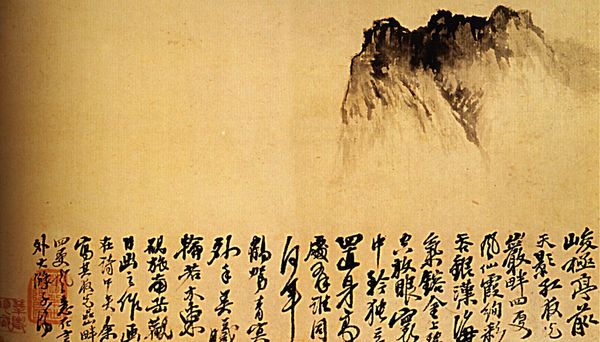
painting, paper, ink
#
tree
#
painting
#
asian-art
#
landscape
#
house
#
paper
#
text
#
ink
#
mountain
#
abstraction
#
watercolor
#
calligraphy
#
building
Dimensions: 24.8 x 17.2 cm
Copyright: Public domain
Editor: Okay, next up is “Between mountain and river, not far from Mount Huang,” painted in 1667 by Shitao. It’s an ink on paper painting, and what really strikes me is how the mountain dominates the composition, it is just massive. What do you see in this piece? Curator: Shitao's work, especially in its historical context, becomes incredibly interesting. Consider the period: The Qing dynasty was consolidating power, and artists like Shitao navigated a complex political landscape. Landscape painting, like this, became a way to express ideas about retreat, reflection, and even veiled commentary on the state of the world. Editor: So, the huge mountain is maybe more than just a mountain? It could be symbolic? Curator: Absolutely. It might symbolize enduring values, stability, or even resistance. And what about the inclusion of text as an important element of the painting? How does calligraphy shape your understanding of the piece? Editor: The text definitely pulls my eye and adds a personal, reflective element, even though I can’t read it! It suggests the artist's voice or perhaps a dedication. I imagine that during times of upheaval, this calligraphic gesture connected the image to a sophisticated literati audience who had an eye to the past, present, and future. Curator: Exactly. This kind of landscape, blending image and text, allowed for subtle forms of expression that resonated with a specific cultural milieu and served as artistic statements on society and identity. Considering that, how does the materiality, like the ink and paper, inform that sense of reflection, or that search for cultural identity in his art? Editor: Hmm, the ink feels almost fragile, which underscores that reflective, thoughtful tone, I suppose. Thank you for giving me an insight into what this represents historically; there’s a whole other level to Shitao’s landscapes that I’d missed. Curator: And that’s the joy of art history! Understanding the context transforms our view of the artwork and reveals its deeper social purpose.
Comments
No comments
Be the first to comment and join the conversation on the ultimate creative platform.
